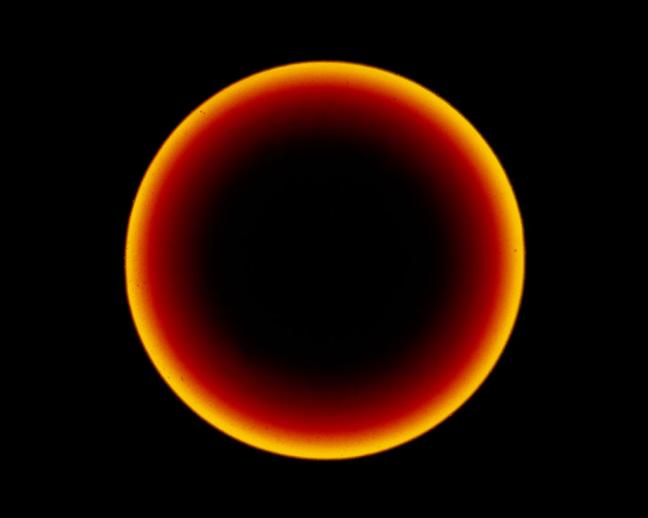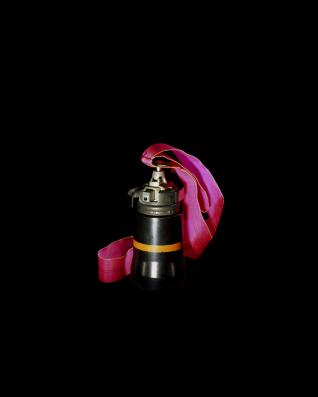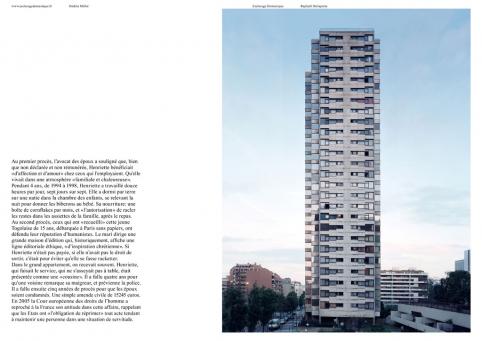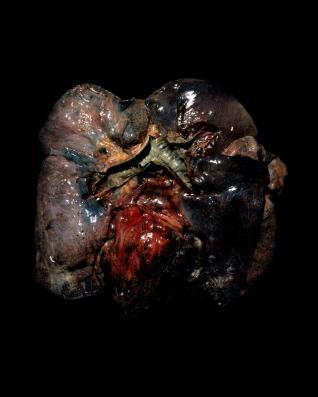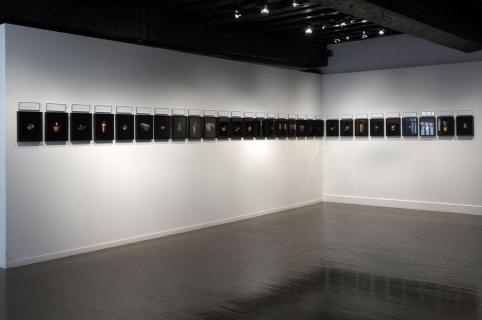Raphaël Dallaporta’s (b. 1980) work deals with life’s fragility while at the same time analysing the perversity of society. This young photographer’s subtle and intriguing work appeals to the spectator’s curiosity and sensibility.
« Observation » displays a body of work that doesn’t shy away from meaningful objects such as simple industrial items. But make no mistake, this detachment, this false objectivity is there to show the limits of photography and its overblown aestheticism.
This first solo exhibition by the artist in a French museum will present the series « Antipersonnel » (Antipersonnel), « Esclavage domestique » (Domestic slavery), « Fragile » (Fragile), and « Ruine » (Ruin).
Raphaël Dallaporta’s atypical approach to photography places his work on the border between conceptual art and documentary reportage. He is the opposite of a solitary artist, as he regularly collaborates with other professionals that enable him to enter other unknown or forbidden worlds.
His work is the fruit of his collaboration with military engineers from Angers, lawyers, a professor from the coroner’s office in Garches or archaeologists…
Each image is created according to a strict protocol that blends the frontal and the neutral working together to decontextualise the object represented.
Antipersonnel,
2004
Unknown objects seem to emerge from the darkness. The legend quickly informs us that they are anti-personnel mines. Raphaël Dallaporta deals with the object reproduced to scale and lets us imagine the consequences of its existence. There are no bloody reportage images to illustrate the mutilations caused by these devices. The photographer presents us with contemporary still lifes that appear inoffensive but that tend to be aestheticised by photographic techniques all the better to erase the actual use of the object.
Domestic Slavery,
2006
Cold, distant images of building facades are associated with text. The narratives are written by Ondine Millot to describe the events that took place at the exact address of the buildings in the photographs. The spectator comes to understand that the series deals with an often undocumented consequence of human trafficking: modern slavery.
The images force us to come to terms with the upsetting reality that is hidden behind the ordinary facades. Raphaël Dallaporta denounces unbearable situations where one human being reduces another to the status of thing, and gives it depth through the distance of the photographs and his refusal to sensationalise.
Fragile,
2010
Raphaël Dallaporta photographs organs, like the encyclopaedic colour plates for an anatomy class. The legend, again, explains the origins of these silent images. The organ represented is not the issue; the reason for its presence on the slab is the issue. The apparent neutrality of the shot, according to a strict protocol (frontal shot, on a black background enabling the strong lighting of the « subject »), isolates each fragment of the body as a clue that enables to determine the cause of death. These relics of flesh and bone have a real role to play. But the way they are shot lends them a metaphysical and philosophical dimension that reminds us of life’s ephemeral nature and human vulnerability.
Ruin, Season 1,
2011
In the autumn of 2010, Raphaël Dallaporta took part in an archaeological mission in the Bactriane region in Afghanistan, scene of Alexander the Great’s mythical conquest. Using a drone he designed himself, he took aerial photographs of endangered or heretofore unknown archaeological sites in a country at war. The remote controlled device was timed to take photos of unrivalled precision every five seconds. The way the images are put together with their voluntarily asymmetrical contours depict these inaccessible monuments and places at their best. The most cutting-edge technology reveals the artist’s themes – destruction, the precariousness of things. It brings to light that which was and is no longer. Is this not the very definition of all photography?
All of Raphaël Dallaporta’s work points towards the same conclusion: photography doesn’t say anything; it records a shape and documents the invisible. A modern medium for traditional vanities, it enables the artist to subtly evoke the fragility of life, the violence and the vices of contemporary society.
This exhibition is produced in collaboration with the Gwin Zegal center for art and research.
Curators: Raphaël Dallaporta and Jérôme Sother
